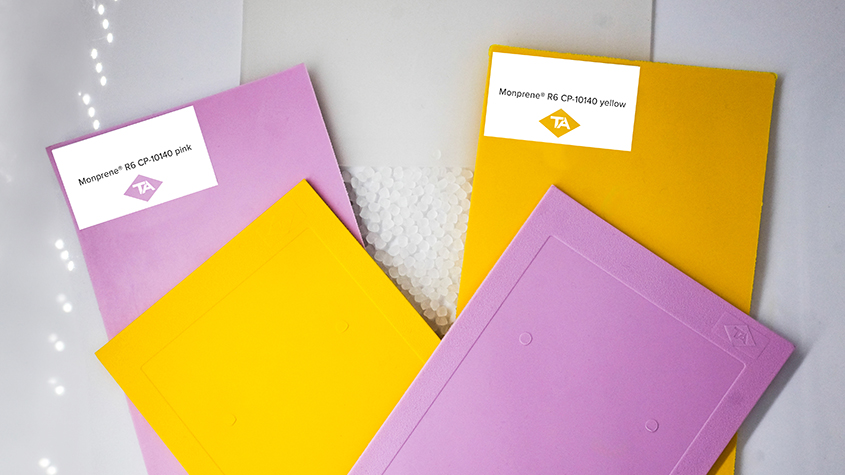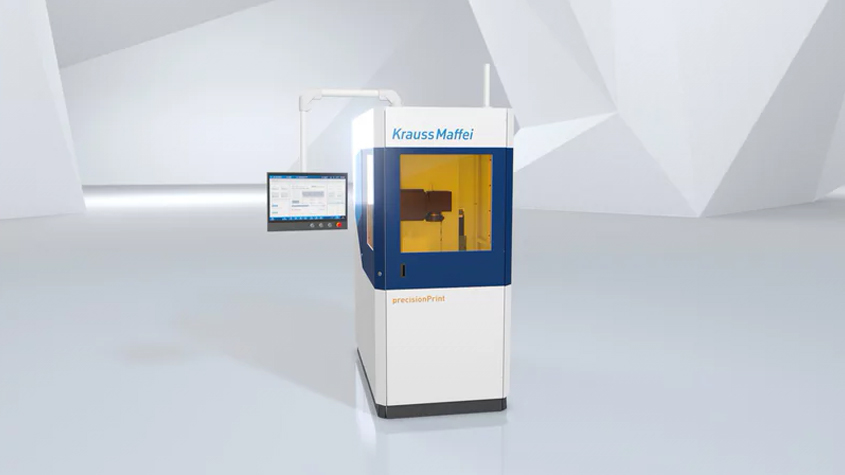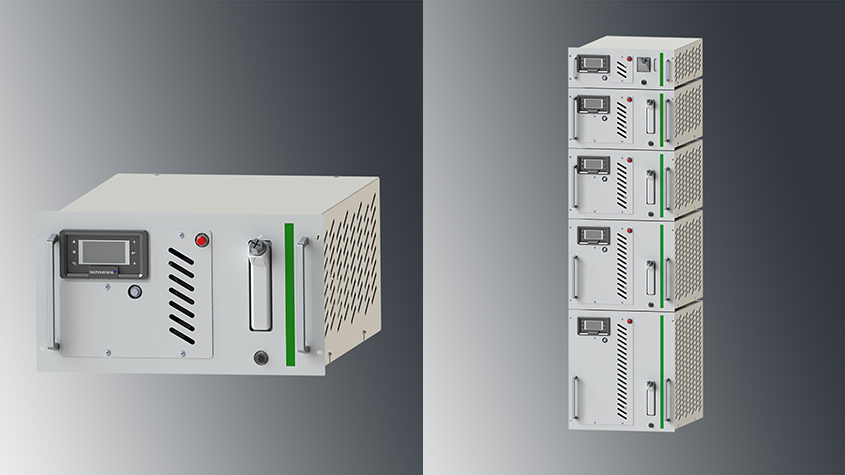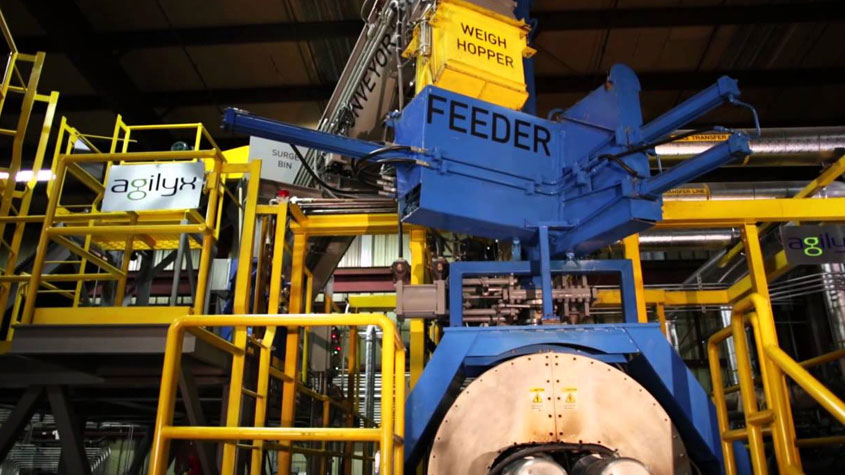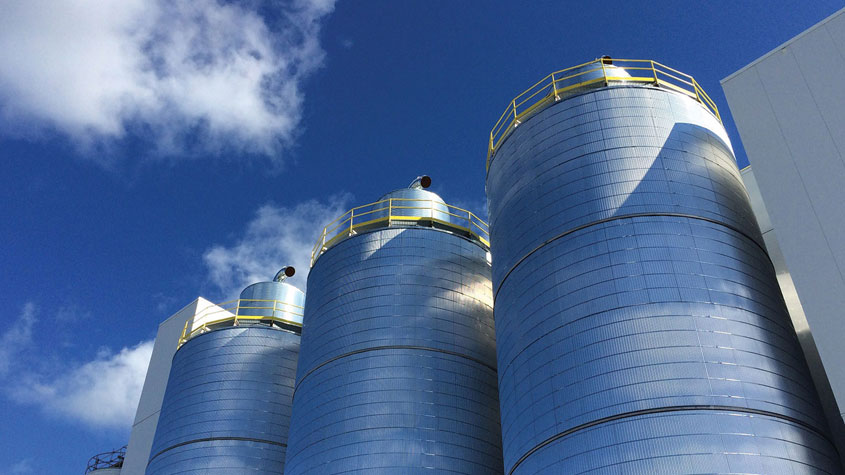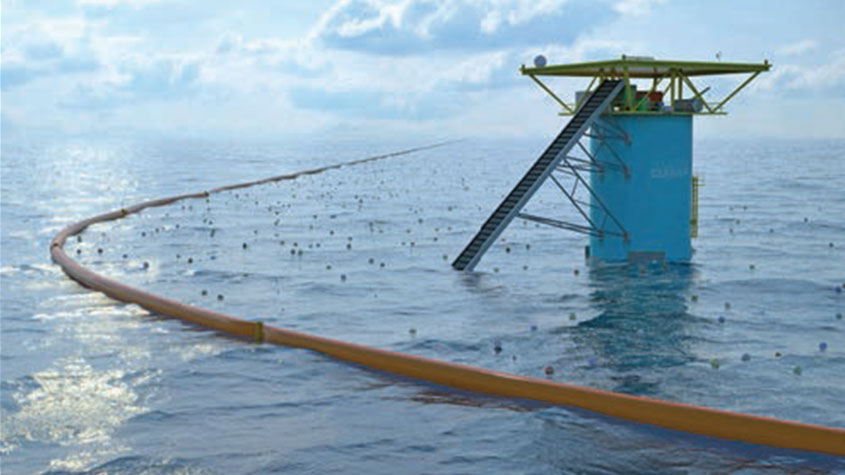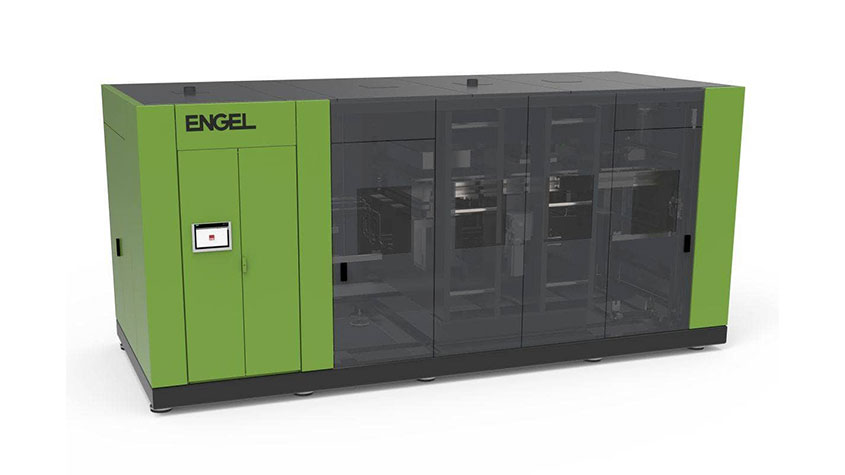
At Composites Europe 2018, from 6 to 8 November in Stuttgart, Germany, ENGEL is setting two further milestones on the road to highly economical production of thermoplastic composites.
The ENGEL organomelt process is being used for the first time world-wide in the large-scale production of front-end carriers with integrated air ducts. ENGEL is also expanding its system range with a consolidation press for processing UD tapes.
Fully automated one-shot process

The processing and functionalisation of thermoplastic continuous fibre-reinforced semi-finished products, such as thermoplastic fabrics or UD tapes, using the ENGEL organomelt process will be one key focus at ENGEL’s trade fair stand this year. The world’s first large-scale application has been launched in the USA. Valeo Front End Modules manufactures front-end carriers with integrated air ducts for a renowned German OEM in Smyrna, Tennessee. In July of this year, the structural components won an Automotive Award from the Society of Plastics Engineers (SPE) for their innovative production based on organic sheets and its outstanding properties. The parts expose an outstandingly high organic sheet fraction, resulting in significant weight savings and improved crash performance. In addition, it was possible to integrate the air ducts directly into the support using a double-shell structure.

The fully automated, large-scale production system solution supplied by ENGEL consists of a duo 1700 injection moulding machine with 17,000 kN clamping force, three easix articulated robots for the preparation of a plurality of metal inserts as well as for the handling of the organic sheet, a viper 90 linear robot and a size 5 IR oven. ENGEL provides this cell as a system solution all from a single sorce. The two half-shells are produced in the same mould in a one-shot process. For this purpose, the two organic sheets are simultaneously heated in the IR oven, inserted into the mould, shaped there and directly functionalised by means of an injection moulding process taking place in the same mould. The Tepex dynalite type organic sheets provided by Bond Laminates are based on glass fibres in a polypropylene matrix. Glass-fibre reinforced polypropylene is also used for overmoulding.
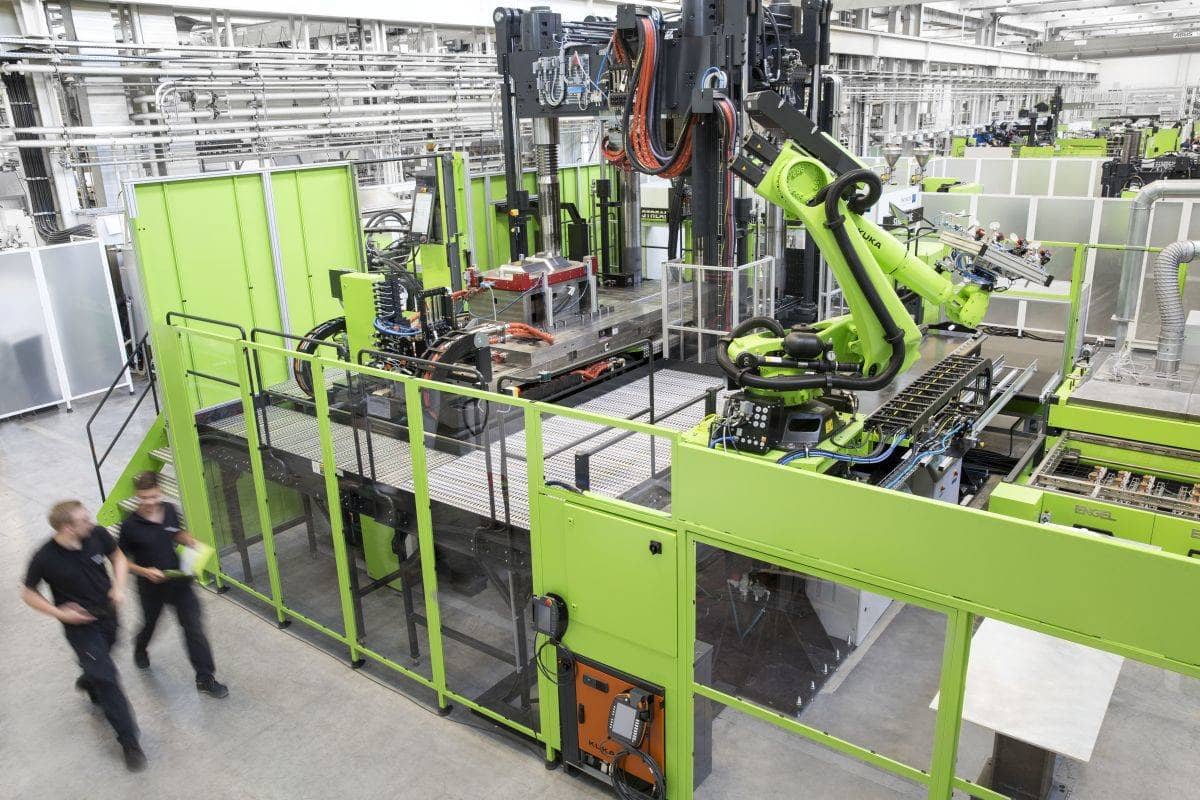
It is only the consistent thermoplastic approach that makes it possible to integrate the forming process and functionalisation, and to merge the supporting structure and functional elements in an adhesive manner. “The fully automated one-shot process contributes considerably to the low unit costs required by the automotive industry,” as Christian Wolfsberger, Business Development Manager Composite Technologies at ENGEL’s headquarters in Schwertberg, Austria, emphasises. A further benefit: the use of exclusively thermoplastic polymers simplifies the development of recycling strategies with the aim of returning the components to the material cycles at the end of their service life. “We can see that thermoplastic-based composite lightweight design is increasingly becoming the focus of product developers, both in the automotive and aircraft industries,” as Wolfsberger stresses.
New consolidation press for UD tapes
ENGEL organomelt technology is suitable for both organic sheets and unidirectional (UD) glass and/or carbon fibre reinforced tapes with thermoplastic matrix. Tapes make it possible to design semi-finished products in line with requirements and thus make even better use of the components’ lightweight design potential. The components are either partially reinforced with just a few tapes or are produced from tape stacks several millimetres thick.
To be cost-effective in large-scale production, the stacks must be made and consolidated inline and within the cycle of the injection moulding process. As a system supplier, ENGEL is in a position to offer integrated and fully automated solutions for the entire process – from individual tapes through to functionalisation in the injection moulding process – from a single source.
Two systems are used for the production of the blanks. A pick-and-place tape stacking cell with optical image processing and a consolidation press, which ENGEL will be presenting for the first time at Composites Europe. “With this new development, we have succeeded in consolidating stacks of fibre-reinforced thermoplastic tapes in the injection moulding cycle,” says Dr. Norbert Müller, head of ENGEL’s center for lightweight composite technologies. “The consolidation press can be seamlessly integrated into the overall process, which significantly increases efficiency in the production of tailor-made tape solutions.”
The consolidation press developed by ENGEL in cooperation with its partner Fill (Gurten, Austria) can be used to consolidate fibre stacks with deliberate fibre orientation and different wall thicknesses. All process steps are automated. All told, the consolidation process integrates inserting the fibre stack into the mould, transferring the closed mould to the heating press, heating, transferring the mould to the cooling press, consolidation, cooling and transferring to the initial station, where the mould is opened, the consolidated semi-finished product (blank) removed and a new fibre stack inserted so that the cycle can start again.
Tape stacking cell with high-resolution camera technology
The tape stacking cell was developed by ENGEL. In order to achieve the shortest possible cycle times here too, it relies on the pick-and-place principle. This means that tapes can be deposited and spot-welded together at three-second intervals. Since the quality of the stack depends largely on the accuracy of the tape positioning, ENGEL has equipped the stacking cell with a measuring system comprising high-resolution camera technology. The measuring system delivers data that is used for actively intervening in the depositing process, thus guaranteeing the greatest possible depositing accuracy.
Pick-and-place stacking technology with optical image processing offers highly flexible use. The tapes can have almost arbitrary widths and contours. Because the stacks obtain their shape required for the component during stacking, consolidation can be followed by forming and functionalisation in the injection moulding step without the need for intermediate trimming.
ENGEL is already using this kind of solution for the manufacturing of its own products. The rotation arm of the e-pic robot consists of carbon fibre reinforced tapes.
All future-oriented technologies at a glance
With its decades of experience in injection moulding machine manufacturing and the automation of production processes, ENGEL brings the key success factors for developing highly efficient processes for the production of innovative lightweight composites for the particularly price-sensitive automotive industry to the table. Since 2012, ENGEL has combined its own lightweight construction expertise with the know-how of other companies, universities and research institutes at its own Centre for Lightweight Composite Technologies. The interdisciplinary development team there looks into all future-oriented composite technologies. In addition to the processing of fibre-reinforced thermoplastic semi-finished products, this also includes HP-RTM, SMC and reactive processes such as in-situ polymerization (T-RTM). At Composites Europe, ENGEL’s lightweight construction experts will be presenting the broad spectrum of technological possibilities and providing insights into current development projects.
ENGEL at Composites Europe 2018: hall 9, stand B25
Chinese economy to grow over 6.5 pct in 2018, 2019: report
BEIJING, March 1 (Xinhua) — China’s economy will grow by over 6.5 percent this…

